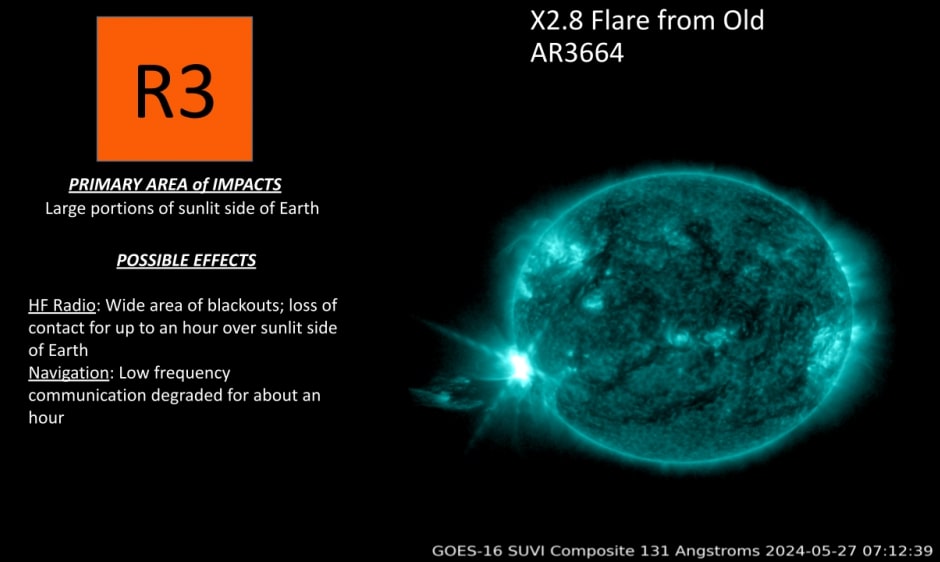Strong Solar Storm Could Be Headed Our Way, Causing Major Blackouts and More
A solar flare eruption could impact significant parts of the half of the earth facing the sun, according to a new bulletin from the National Oceanic and Atmospheric Administration.
The “R3” advisory, issued Tuesday, signifies a “strong” warning of a solar event that could lead to “[w]ide area blackout of HF radio communication, loss of radio contact for about an hour on sunlit side of Earth,” according to the federal agency’s spaceweather.gov website.
The solar flare could also cause “[l]ow-frequency navigation signals [to be] degraded for about an hour,” according to the site.
The R3 rating appears on the middle of a scale from R1, indicating that “minor” issues could be caused by the outbreak, to R5, whip represents a “extreme” threat to radio communication and navigation.

According to the New York Post, the same sunspot that caused the appearance of the aurora borealis — or northern lights — to be visible far to the south of their usual viewing area is responsible for this flare as well.
The flare originated from an area in the southeastern portion of the sun, a region labeled AR3664 by researchers.
Classed as an X2.8 — which the Post called “the most powerful variety that the Sun is capable of producing” — the flare is causing more dramatic effects on earth than have been seen in some years.
“The event interrupted shortwave radio and triggered a coronal mass ejection, in which plasma and magnetic particles exploded from the sun’s surface,” the Post reported late Tuesday. “Fortunately, the CME will not impact the Earth.”
[firefly_poll]
The Post’s Ben Cost suggested the unsettled region of the sun might not be done causing problems for earth-dwellers.
The sun’s normal rotation will bring region AR3664 back into a position facing earth directly in about a week, and “it could generate another interstellar tempest should particles continue to erupt” from the sun’s surface, he wrote.
The last time the region faced earth directly, we saw a G5-rated solar storm, the highest level on NOAA’s geomagnetic storm scale, capable of producing “extreme” effects on power grids, satellite navigation, radio transmissions and other systems.
Cost said the possibility of such a storm reoccurring was “likely,” given the region’s recent activity.
Dr. Ryan French of the National Solar Observatory posted on social media last week about some of that activity.
Huge flare! Although not visible to Earth, old AR 13664 (responsible for recent solar storms) just popped off its biggest flare yet! Measured by the Solar Orbiter spacecraft behind the Sun, the flare is estimated as an X12-class. This flare also caused a huge CME behind the Sun. pic.twitter.com/i9cYgRzdOc
— Dr. Ryan French (@RyanJFrench) May 20, 2024
In a subsequent post, French wrote that the sun hadn’t shot off an X12-class solar flare since September of 2017 — although, he noted, some of the flares that occur on the side of the sun not facing the earth can be hard to measure accurately.
French told Live Science that the aurora borealis maybe again be visible in more southern latitudes than usual beginning the first week in June.
This article appeared originally on The Western Journal.











